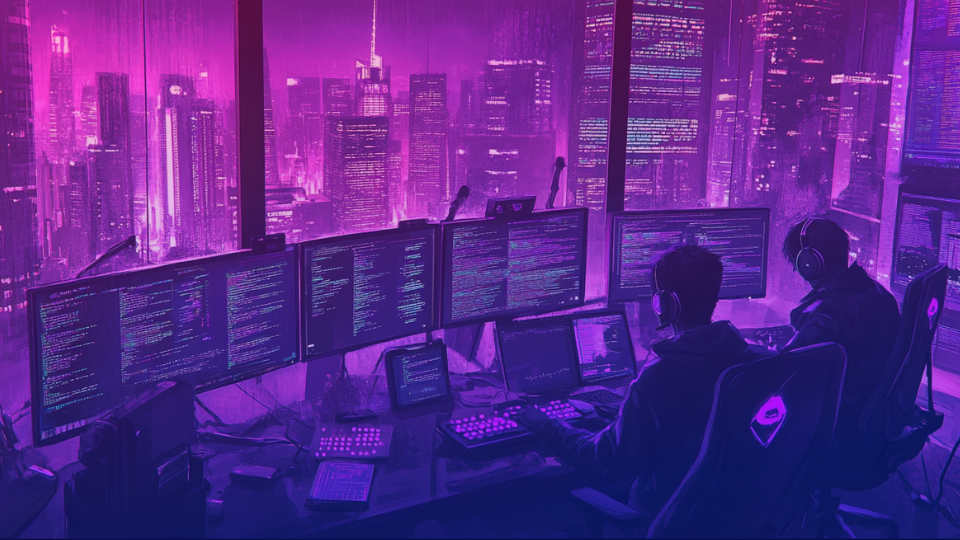Stress-Tested: What Keeps eCommerce Cyber Teams Resilient?

Introduction
Optimizing team performance within the high-stress environments of eCommerce cybersecurity requires a nuanced approach, focusing on conflict resolution, motivation, and morale. The vital role cybersecurity teams play cannot be understated—they are the first line of defense against an ever-growing wave of cyber threats, safeguarding digital assets, customer privacy, and the integrity of financial transactions. The financial stakes are highlighted by the "2023 Cost of a Data Breach Report" from IBM, which underscores the significant costs and extended recovery periods associated with breaches.
As the threat landscape expands, detailed in Symantec's "2023 Cybersecurity Threat Landscape," the increase in ransomware, phishing, and DDoS attacks necessitates a proactive and adaptable team strategy. Furthermore, the emergence of Cybercrime-as-a-Service (CaaS) on the Dark Web and sophisticated nation-state sponsored attacks adds layers of complexity to the team's challenge, demanding both technical acumen and strategic foresight.
Against this backdrop, leading cybersecurity teams in eCommerce involves more than just technical defense; it requires building a culture of resilience, where ongoing training, awareness, and a clear understanding of roles foster a sense of purpose and teamwork. As we navigate these challenges, developing strategies for conflict resolution, boosting team motivation, and maintaining morale are critical.
How can leaders help teams with managing stress and enhancing resilience in cybersecurity backdrops?
Confidence Boosting Strategies: Integrate hands-on workshops that simulate real-world eCommerce security breaches, encouraging team members to apply their skills in a controlled, high-pressure environment. Celebrate milestones with rewards directly tied to the eCommerce context, such as recognition in company-wide meetings or features in customer newsletters, highlighting their role in protecting customer data.
Enhancing Adaptability: Implement monthly "hack days" where team members can work on projects outside their usual responsibilities, encouraging innovation and adaptability. Use these sessions to develop new strategies for tackling eCommerce-specific cyber threats, such as payment fraud or customer data breaches.
Fostering Purposefulness: Clearly communicate the direct impact of the cybersecurity team's work on the company's bottom line and customer trust, reinforcing the significance of their role in the broader eCommerce ecosystem. Develop mission statements in collaboration with team members to ensure they reflect shared values and objectives.
Strengthening Social Support: Create a mentorship program within the cybersecurity team, pairing less experienced members with veterans to foster a supportive culture. Utilize secure, internal social media platforms for team members to share insights, challenges, and successes in real time, enhancing the sense of community.
Integrative Restoration (iRest) Protocol: Offer regular, guided iRest sessions tailored to the high-stress environment of eCommerce cybersecurity, focusing on combating digital fatigue and promoting mental clarity. Encourage the integration of iRest principles into daily routines, providing resources and space for practice.
Mitigating Burnout: Schedule regular, mandatory offline periods where team members are encouraged to step away from all digital devices, emphasizing the importance of disconnection for mental health. Incorporate flexible scheduling that acknowledges the around-the-clock demands of eCommerce security, allowing for downtime following high-intensity periods.
The key to thriving in the fast-paced, high-pressure world of eCommerce cybersecurity lies not just in technical prowess but in fostering a resilient, well-supported team.
The role of leadership
The landscape of cybersecurity is perpetually shifting, demanding a leadership style that is not only adaptive but also forward-thinking to safeguard digital assets effectively.
Adaptive Leadership in Cybersecurity
The essence of adaptive leadership is its responsiveness to the dynamic nature of cyber threats, particularly in the eCommerce domain. This leadership model emphasizes flexibility, continuous learning, and strategic agility, enabling leaders to anticipate changes and pivot strategies accordingly. Principles of adaptive cybersecurity, as outlined by Bitdefender, underscore the need for leaders who can harness innovative technologies like AI and machine learning to bolster threat detection and response.
The Dual Role of CISOs
Chief Information Security Officers (CISOs) embody a dual role, merging strategic vision with technical expertise to steer their teams through tumultuous waters. This delicate balance involves not just defending against threats but also nurturing a team capable of maintaining high morale and performance under pressure. Emotional resilience, alongside a robust support system, is crucial for both CISOs and their teams, underscoring the importance of mental health resources and professional development opportunities focused on building resilience.
Fostering Leadership Development
Developing leadership skills suited to high-stress environments involves a commitment to continuous learning and improvement. Mentorship programs and peer support networks play a significant role in enhancing leadership capabilities, offering a platform for sharing experiences and strategies. This emphasis on professional development is critical for preparing CISOs and cybersecurity leaders to face emerging threats with confidence and resilience.
In eCommerce cybersecurity, success hinges on blending skill with resilience. Leadership's role is pivotal, driving adaptability, continuous improvement, and strong support. As we navigate evolving threats, the question remains: How do you plan on implementing policies that promote resilience and stability?






